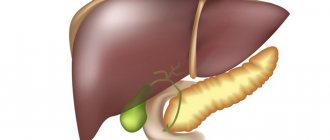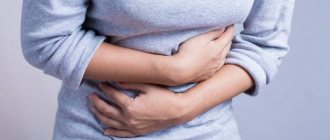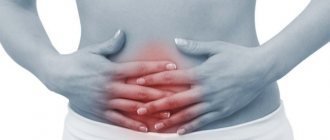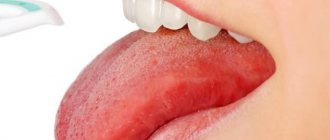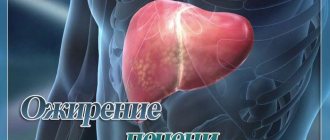General rules
Liver fibrosis (AF) refers to the process of proliferation of connective tissue in the liver with damage to hepatocytes , which occurs under the influence of various hepatotoxic factors (alcohol metabolites, hepatitis , toxic substances, autoimmune factors). Liver fibrosis is one of the typical pathological processes underlying any diffuse chronic liver disease, regardless of its etiology. Under its influence, a change occurs in the extracellular matrix of the liver, which leads to disruption of the structure of the organ (capillarization/stenuation of sinusoids). At the same time, hepatocytes suffer, which negatively affects liver function and, as a result, leads to the formation of portal hypertension and liver cirrhosis . The process is based on active collagen . In addition to damaging agents/factors, an important role is played by reasons that activate the process of fibrogenesis :
- high viral load in chronic hepatitis B (HBV infection);
- congenital/acquired disorder of bile outflow (cholestasis);
- age - after 45 years, since the level of accumulation of connective tissue in the liver correlates with age;
- male gender - due to higher levels of alcohol abuse;
- iron/copper overload syndromes;
- abdominal obesity / fatty hepatosis /insulin resistance;
- diseases of the cardiovascular system.
There are 5 degrees (stages) of liver fibrosis - F0, F1, F2, F3, F4 (cirrhosis). The transition from stage to stage takes place on average over a period of 3-4 years, but the rate of fibrosis progression in later stages is higher. This process depends primarily on the activity of the inflammatory process in the liver.
The severity of clinical symptoms depends on the stage of the disease/level of compensation. Compensated liver fibrosis (the first 3 stages) is usually asymptomatic/with atypical minimal manifestations: general weakness, decreased performance, increased fatigue, irritability, heaviness/pain in the right hypochondrium, nausea, bitterness in the mouth, spider veins on the skin, jaundice . At the late stage (decompensation), itching of the skin, joint pain, increased blood pressure in the portal vein leading to ascites , mental disorders, and liver failure .
Modern approaches to the treatment of fibrosis are based on the fact that liver fibrosis is a completely reversible process with possible restoration of liver structure/function. Basic therapy for liver fibrosis is based primarily on the elimination of etiological factors (drugs, alcohol, viruses, toxic occupational/domestic factors), drug therapy (antioxidants/cytoprotectors, antiviral drugs, hepatoprotectors), nutritional therapy, and treatment of complications. There is no special diet for liver fibrosis as such. Traditionally, nutritionists believe that a diet for liver fibrosis should be based on the classic treatment Table No. 5 / its varieties (5A, 5B), which provides maximum mechanical/chemical sparing of the organ and normalization of its function/bile secretion process.
The diet includes:
- Limiting fats, mainly animals (fatty meat/dairy products, butter, hard margarine, animal fat) to 30% of the energy value of the diet. At the same time, the ratio of polyunsaturated/saturated fatty acids should be greater than one. This is achieved by increasing the consumption of vegetable oils, fish, seafood, poultry, olives, nuts/seeds, taking into account the energy component.
- The content of the protein component is at the level of 1-1.5 g/kg body weight/day.
- Exclusion of foods (no more than 300 mg per day) with a high cholesterol - egg yolk, offal (liver, kidneys), raw smoked sausages, caviar, fatty meats/dairy products.
- Exclusion of products prepared by prohibited methods of culinary food processing (frying/deep-frying), containing chemical food additives, nitrogenous extractives, coarse fiber.
- Enriching the diet with vitamins/prebiotic foods (artichoke, leek, garlic, fruit, Jerusalem artichoke).
- For patients with liver fibrosis and impaired glucose tolerance/ diabetes, simple carbohydrates are excluded from the diet and the consumption of complex carbohydrates is limited.
Methods of culinary processing of products - boiling, baking, stewing. For patients with increased body weight, the caloric intake of the diet is reduced by an average of 500 kcal/day. If complications occur, in particular edematous-ascitic syndrome , salt (up to 2 g/day) and liquid to 1 l/day are limited in the diet. When ascites and edema increase, salt is completely excluded from the diet for 5-10 days and foods rich in potassium are introduced.
The diet for liver fibrosis requires the mandatory use of drugs with a hepaprotective effect, especially ursodeoxycholic acid / essential phospholipids ( Eslidin , Legalon ), which have a direct antifibrotic effect and a pronounced anti-inflammatory/immunomodulatory effect for a period of 3-6 months or permanently.
Diagnosis of fibrosis
If pathological symptoms appear, the patient goes to the clinic. Treatment and diagnosis of this disease is carried out by a gastroenterologist or general practitioner.
In order to make a diagnosis, the doctor conducts an examination. At the initial stages it will not be informative. But if the patient has fibrosis of the 3rd or 4th degree, then upon palpation the liver will noticeably increase in size, as well as its denser structure. The patient may complain of pain when pressing.
Additionally for diagnosis use:
- general blood test - decreased hemoglobin, red blood cells, increased ESR;
- general urine analysis - the presence of protein, casts, bilirubin in it;
- biochemical blood test - increased activity of all liver parameters (ALT, AST, bilirubin, alkaline phosphatase, etc.);
- Ultrasound of the liver - during the examination, it is possible to detect an increase in the size of the organ and a change in its structure: strands of connective tissue, foci of fibrosis, parasitic cysts, dilation of the bile ducts and liver vessels;
- indirect elastometry - performed using a fibroscan, allows you to evaluate the structure of the liver without compromising the integrity of the skin. The device evaluates tissue elasticity: fibrous tissue is denser than normal liver parenchyma;
- MRI, CT – the quantity and quality of fibrous lesions are determined.
But to make a diagnosis of liver fibrosis, a biopsy is necessary. During the examination, a piece of affected liver tissue is taken for analysis using a thick trepanation needle (under ultrasound guidance).
To assess the stages of fibrosis, the following scale is used:
Formation of fibrous tissue
- 0 degree – no fibrosis;
- fibrosis of the 1st degree – liver functionality is impaired. The portal tracts are stellate in shape. If the disease is detected on time and treatment is started, the prognosis is favorable;
- fibrosis of the 2nd degree – the number of fibrotic foci increases. Single septa appear in the hepatic lobes. With the help of medications, normal liver functioning is possible;
- fibrosis of the 3rd degree - the liver is penetrated by strands of connective tissue, its size is increased, the bile ducts are dilated. The prognosis is unfavorable. Drug therapy provides little relief.
- Stage 4 – the disease progresses to cirrhosis, which cannot be treated. The only way to survive with such a diagnosis is liver transplantation.
If the patient has contraindications to a biopsy (reduced blood clotting, parasitic cysts, serious condition of the patient), the diagnosis of liver fibrosis can be made on the basis of elastometry.
Authorized Products
The diet for liver fibrosis includes:
- Wheat bread (dried/day-old) or made from coarse rye flour, baked goods made from soft dough, dry cookies.
- Vegetable soups without dressing with the addition of well-cooked cereals (rice, oatmeal, pearl barley/pasta).
- Lean red meat animals/poultry: turkey, beef, rabbit, lean pork, chicken (without skin) boiled in pieces/chopped. From sausage products - doctor's sausage. Milk sausages.
- Low-fat sea/river fish (perch, hake, pike, carp, capelin, cod, pike perch) in pieces, steamed, boiled/baked.
- Low-fat dairy products (ryazhenka, yogurt, kefir, low-fat cottage cheese, cheese).
- Chicken eggs (soft-boiled, baked/steamed egg white omelettes) from 2 eggs.
- Semi-liquid oatmeal/buckwheat porridges, casseroles, white rice, boiled pasta.
- Fresh/boiled or baked vegetables: carrots, tomatoes, zucchini, cabbage, cucumbers, garden herbs (dill/parsley, basil), beets, pumpkin, potatoes.
- Refined vegetable oils, in ready-made dishes - butter.
- Non-acidic fruits/berries, raw or baked pureed, honey, marmalade, jam, marshmallows, dried fruits (dried apricots, raisins, prunes).
- Weak green tea, freshly prepared fruit/berry/vegetable juices, still mineral water, rosehip/wheat bran infusions.
Table of permitted products
| Proteins, g | Fats, g | Carbohydrates, g | Calories, kcal | |
Vegetables and greens | ||||
| zucchini | 0,6 | 0,3 | 4,6 | 24 |
| broccoli | 3,0 | 0,4 | 5,2 | 28 |
| cauliflower | 2,5 | 0,3 | 5,4 | 30 |
| potato | 2,0 | 0,4 | 18,1 | 80 |
| carrot | 1,3 | 0,1 | 6,9 | 32 |
| pumpkin | 1,3 | 0,3 | 7,7 | 28 |
Fruits | ||||
| apricots | 0,9 | 0,1 | 10,8 | 41 |
| quince | 0,6 | 0,5 | 9,8 | 40 |
| watermelon | 0,6 | 0,1 | 5,8 | 25 |
| bananas | 1,5 | 0,2 | 21,8 | 95 |
| pears | 0,4 | 0,3 | 10,9 | 42 |
| melon | 0,6 | 0,3 | 7,4 | 33 |
| kiwi | 1,0 | 0,6 | 10,3 | 48 |
| peaches | 0,9 | 0,1 | 11,3 | 46 |
| plums | 0,8 | 0,3 | 9,6 | 42 |
| persimmon | 0,5 | 0,3 | 15,3 | 66 |
| apples | 0,4 | 0,4 | 9,8 | 47 |
Berries | ||||
| strawberry | 0,8 | 0,4 | 7,5 | 41 |
| blueberry | 1,1 | 0,4 | 7,6 | 44 |
Nuts and dried fruits | ||||
| raisin | 2,9 | 0,6 | 66,0 | 264 |
| dried figs | 3,1 | 0,8 | 57,9 | 257 |
| dried apricots | 5,2 | 0,3 | 51,0 | 215 |
| dried apricots | 5,0 | 0,4 | 50,6 | 213 |
| prunes | 2,3 | 0,7 | 57,5 | 231 |
Cereals and porridges | ||||
| buckwheat (kernel) | 12,6 | 3,3 | 62,1 | 313 |
| semolina | 10,3 | 1,0 | 73,3 | 328 |
| oat groats | 12,3 | 6,1 | 59,5 | 342 |
| pearl barley | 9,3 | 1,1 | 73,7 | 320 |
| rice | 6,7 | 0,7 | 78,9 | 344 |
Flour and pasta | ||||
| pasta | 10,4 | 1,1 | 69,7 | 337 |
| buckwheat noodles | 14,7 | 0,9 | 70,5 | 348 |
Bakery products | ||||
| wheat bread | 8,1 | 1,0 | 48,8 | 242 |
Confectionery | ||||
| jam | 0,3 | 0,2 | 63,0 | 263 |
| jelly | 2,7 | 0,0 | 17,9 | 79 |
| marshmallows | 0,8 | 0,0 | 78,5 | 304 |
| fruit and berry marmalade | 0,4 | 0,0 | 76,6 | 293 |
| paste | 0,5 | 0,0 | 80,8 | 310 |
Raw materials and seasonings | ||||
| honey | 0,8 | 0,0 | 81,5 | 329 |
| sugar | 0,0 | 0,0 | 99,7 | 398 |
Dairy | ||||
| kefir 1.5% | 3,3 | 1,5 | 3,6 | 41 |
| curdled milk 1% | 3,0 | 1,0 | 4,1 | 40 |
| acidophilus 1% | 3,0 | 1,0 | 4,0 | 40 |
Cheeses and cottage cheese | ||||
| cottage cheese 1% | 16,3 | 1,0 | 1,3 | 79 |
| cottage cheese 1.8% (low-fat) | 18,0 | 1,8 | 3,3 | 101 |
Meat products | ||||
| beef | 18,9 | 19,4 | 0,0 | 187 |
| rabbit | 21,0 | 8,0 | 0,0 | 156 |
Bird | ||||
| boiled chicken breast | 29,8 | 1,8 | 0,5 | 137 |
| boiled chicken drumstick | 27,0 | 5,6 | 0,0 | 158 |
| boiled turkey fillet | 25,0 | 1,0 | — | 130 |
Eggs | ||||
| chicken eggs | 12,7 | 10,9 | 0,7 | 157 |
Fish and seafood | ||||
| flounder | 16,5 | 1,8 | 0,0 | 83 |
| pollock | 15,9 | 0,9 | 0,0 | 72 |
| cod | 17,7 | 0,7 | — | 78 |
| hake | 16,6 | 2,2 | 0,0 | 86 |
Oils and fats | ||||
| butter | 0,5 | 82,5 | 0,8 | 748 |
| sunflower oil | 0,0 | 99,9 | 0,0 | 899 |
Non-alcoholic drinks | ||||
| water | 0,0 | 0,0 | 0,0 | — |
| mineral water | 0,0 | 0,0 | 0,0 | — |
Juices and compotes | ||||
| apricot juice | 0,9 | 0,1 | 9,0 | 38 |
| carrot juice | 1,1 | 0,1 | 6,4 | 28 |
| peach juice | 0,9 | 0,1 | 9,5 | 40 |
| pumpkin juice | 0,0 | 0,0 | 9,0 | 38 |
| rose hip juice | 0,1 | 0,0 | 17,6 | 70 |
* data is per 100 g of product
Fully or partially limited products
The diet for liver fibrosis includes exclusion from the diet:
- Soups with meat/fish broth/mushroom broth, okroshka, first courses of legumes, sour soups.
- Fatty red meat, smoked meats, lard, fatty sausages, cooking fats, canned meat, waterfowl poultry (goose/duck), offal (liver, kidneys, brains), fried meat.
- Puff pastry, fresh bread, pancakes, pies, pizza, pastries, cakes, muffins.
- Raw/hard-boiled chicken eggs, fried, seafood, salted/stewed/smoked fish, caviar.
- Hot and spicy seasonings/spices: mayonnaise, vinegar, mustard, horseradish, pepper, spicy/fatty snacks.
- High fat dairy products (cream, whole milk, sour cream, butter, sharp cheeses).
- Some types of vegetables (sorrel, radish, radish, turnip, spinach), mushrooms, legumes, marinades.
- Salted/pickled vegetables.
- Sour unripe fruits/berries, cream products, cocoa, nuts, chocolate, ice cream.
- Black coffee, carbonated/alcoholic drinks, cocoa, grape juice.
Table of prohibited products
| Proteins, g | Fats, g | Carbohydrates, g | Calories, kcal | |
Vegetables and greens | ||||
| canned vegetables | 1,5 | 0,2 | 5,5 | 30 |
| eggplant | 1,2 | 0,1 | 4,5 | 24 |
| swede | 1,2 | 0,1 | 7,7 | 37 |
| peas | 6,0 | 0,0 | 9,0 | 60 |
| bulb onions | 1,4 | 0,0 | 10,4 | 41 |
| chickpeas | 19,0 | 6,0 | 61,0 | 364 |
| cucumbers | 0,8 | 0,1 | 2,8 | 15 |
| salad pepper | 1,3 | 0,0 | 5,3 | 27 |
| parsley | 3,7 | 0,4 | 7,6 | 47 |
| radish | 1,2 | 0,1 | 3,4 | 19 |
| white radish | 1,4 | 0,0 | 4,1 | 21 |
| iceberg lettuce | 0,9 | 0,1 | 1,8 | 14 |
| tomatoes | 0,6 | 0,2 | 4,2 | 20 |
| dill | 2,5 | 0,5 | 6,3 | 38 |
| beans | 7,8 | 0,5 | 21,5 | 123 |
| horseradish | 3,2 | 0,4 | 10,5 | 56 |
| spinach | 2,9 | 0,3 | 2,0 | 22 |
| sorrel | 1,5 | 0,3 | 2,9 | 19 |
Berries | ||||
| grape | 0,6 | 0,2 | 16,8 | 65 |
Mushrooms | ||||
| mushrooms | 3,5 | 2,0 | 2,5 | 30 |
| marinated mushrooms | 2,2 | 0,4 | 0,0 | 20 |
Nuts and dried fruits | ||||
| nuts | 15,0 | 40,0 | 20,0 | 500 |
| peanut | 26,3 | 45,2 | 9,9 | 551 |
| seeds | 22,6 | 49,4 | 4,1 | 567 |
Cereals and porridges | ||||
| millet cereal | 11,5 | 3,3 | 69,3 | 348 |
Flour and pasta | ||||
| pasta | 10,4 | 1,1 | 69,7 | 337 |
| dumplings | 11,9 | 12,4 | 29,0 | 275 |
Bakery products | ||||
| buns | 7,9 | 9,4 | 55,5 | 339 |
| Rye bread | 6,6 | 1,2 | 34,2 | 165 |
Confectionery | ||||
| pastry cream | 0,2 | 26,0 | 16,5 | 300 |
| shortbread dough | 6,5 | 21,6 | 49,9 | 403 |
Ice cream | ||||
| ice cream | 3,7 | 6,9 | 22,1 | 189 |
Chocolate | ||||
| chocolate | 5,4 | 35,3 | 56,5 | 544 |
Raw materials and seasonings | ||||
| mustard | 5,7 | 6,4 | 22,0 | 162 |
| mayonnaise | 2,4 | 67,0 | 3,9 | 627 |
Dairy | ||||
| milk 4.5% | 3,1 | 4,5 | 4,7 | 72 |
| cream 35% (fat) | 2,5 | 35,0 | 3,0 | 337 |
| whipped cream | 3,2 | 22,2 | 12,5 | 257 |
| sour cream 30% | 2,4 | 30,0 | 3,1 | 294 |
Cheeses and cottage cheese | ||||
| parmesan cheese | 33,0 | 28,0 | 0,0 | 392 |
Meat products | ||||
| fatty pork | 11,4 | 49,3 | 0,0 | 489 |
| salo | 2,4 | 89,0 | 0,0 | 797 |
| bacon | 23,0 | 45,0 | 0,0 | 500 |
Sausages | ||||
| smoked sausage | 9,9 | 63,2 | 0,3 | 608 |
Bird | ||||
| smoked chicken | 27,5 | 8,2 | 0,0 | 184 |
| duck | 16,5 | 61,2 | 0,0 | 346 |
| smoked duck | 19,0 | 28,4 | 0,0 | 337 |
| goose | 16,1 | 33,3 | 0,0 | 364 |
Fish and seafood | ||||
| smoked fish | 26,8 | 9,9 | 0,0 | 196 |
| black caviar | 28,0 | 9,7 | 0,0 | 203 |
| salmon caviar granular | 32,0 | 15,0 | 0,0 | 263 |
| salmon | 19,8 | 6,3 | 0,0 | 142 |
| canned fish | 17,5 | 2,0 | 0,0 | 88 |
| salmon | 21,6 | 6,0 | — | 140 |
| trout | 19,2 | 2,1 | — | 97 |
Oils and fats | ||||
| animal fat | 0,0 | 99,7 | 0,0 | 897 |
| cooking fat | 0,0 | 99,7 | 0,0 | 897 |
Alcoholic drinks | ||||
| dry red wine | 0,2 | 0,0 | 0,3 | 68 |
| vodka | 0,0 | 0,0 | 0,1 | 235 |
| beer | 0,3 | 0,0 | 4,6 | 42 |
Non-alcoholic drinks | ||||
| soda water | 0,0 | 0,0 | 0,0 | — |
| cola | 0,0 | 0,0 | 10,4 | 42 |
| instant coffee dry | 15,0 | 3,5 | 0,0 | 94 |
| sprite | 0,1 | 0,0 | 7,0 | 29 |
* data is per 100 g of product
Reviews and results
Diet for liver fibrosis is an obligatory component of the treatment process and, together with drug therapy, normalizes the function of the liver and biliary system as a whole, prevents the development of complications and allows not only to slow down the process of liver fibrosis, but also to achieve the reverse process with the restoration of the structure/function of the liver.
- “... I (59 years old) have liver fibrosis due to long-term alcohol consumption. They prescribed therapeutic nutrition, Table No. 5, and hepaprotectors. I had to give up alcohol completely, I cook for myself, I’ve been on a diet for almost a year, my health has improved, my appetite has returned to normal. I hope that this process will be slowed down”;
- “... After previously suffering from hepatitis of the liver, fibrosis was discovered. So far the disease is said to be at an early stage and I don’t feel any clinical manifestations. But I’m very worried, because the information about liver fibrosis, which is a lot on the Internet, does not cause optimism. Therefore, I decided not to start the disease right away and switch to therapeutic nutrition and taking hepaprotectors. But since the doctor recommended that, first of all, I lose excess weight (5-6 kg), so I reduced the calorie content of my daily diet, and after normalizing my body weight, I will switch to treatment table No. 5. It’s encouraging that fibrosis can not only be slowed down, but also completely eliminated.”
Transplantation
A radical treatment option when:
- medications become ineffective;
- the disease progresses;
- the thermal stage appears.
Indications:
- autoimmune hepatitis;
- primary, secondary biliary cirrhosis.
Reference! The liver being transported may be rejected if the immune system mistakes the graft for a foreign object. Unfortunately, this method, even under favorable conditions, does not guarantee a cure for the disease.


